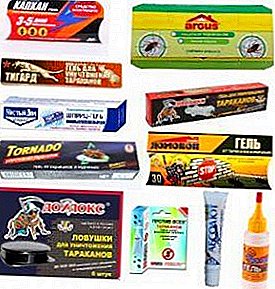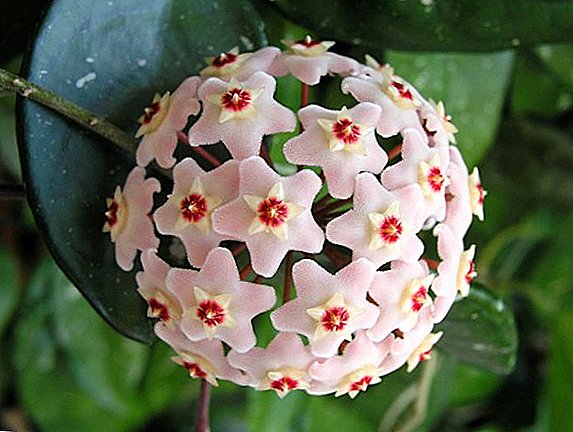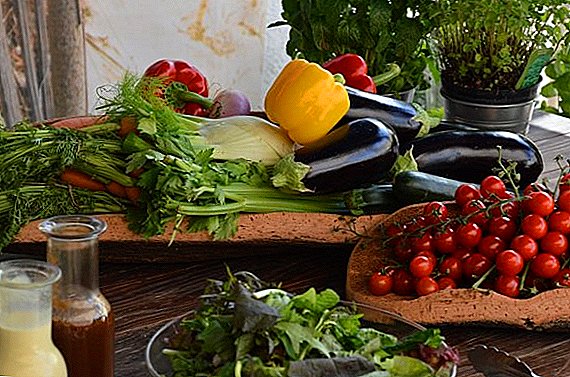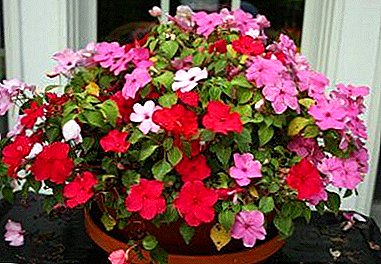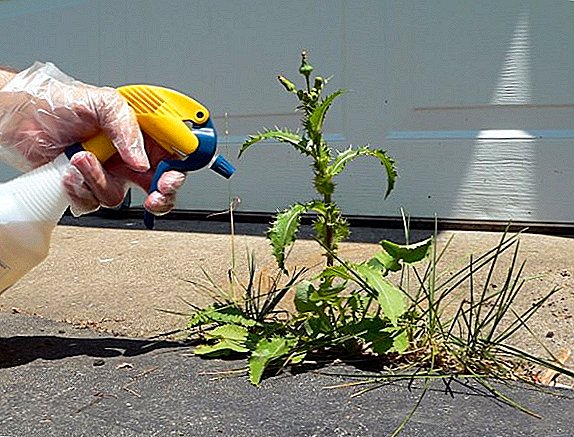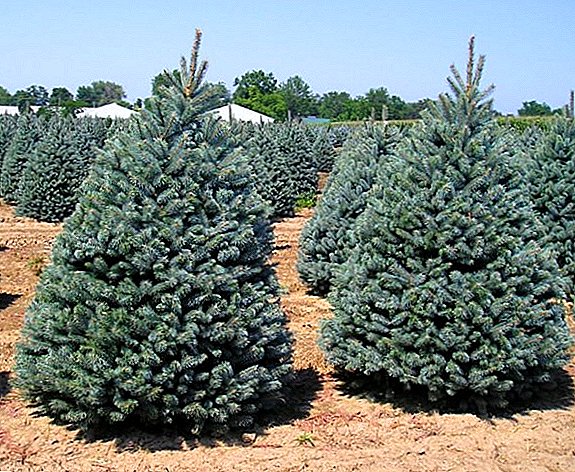
Cherry, “Bull's heart”, “Cream”, pink “Bull-calves”. What summer resident does not like personally grown tomatoes?
From the moment of planting the seeds to the harvest of ripe tomatoes, it takes at least three months, during which the plant overcomes several phases of growth.
In this case, the most important condition for obtaining a rich harvest is the successful growth of green mass bushes. And here not to do without nitrogen, which can be filled with ordinary ammonia. From the article you will learn about the many beneficial qualities of ammonia, as well as the pros and cons of its use.
Useful properties of ammonia solution
Lack of nitrogenous compounds adversely affects the growth of tomatoes. Under-fed ammonia bushes are characterized by low growth, increased thinness and stiffness of the stems.. The leaves of such plants are small and pale, with a yellowish tinge. The greens are fragile and weak, and there is no reason to talk about high-quality fruits. Avoiding nitrogen starvation perfectly helps timely feeding with suitable mineral fertilizers. For example, liquid ammonia.
The ammonia purchased at the pharmacy contains a concentrated tincture of ammonia which is, in turn, a nitrogenous compound. Such nitrogen is easily absorbed by plants, does not need bacterial processing before being used as a fertilizer, and contributes to an increase in the rate of chlorophyll production.
Tomatoes correctly and timely fed with ammonia:
- Actively increase the vegetative mass.
- Bloom profusely and tie fruit.
- Practically free from pest attacks.
- Do not have fungal diseases.
It is recommended to start feeding with ammonia with weak tomatoes, as more robust plants will have enough of a regular spraying with ammonia tincture to prevent fungi and pests.
Regardless of the age, variety and size of the bushes, it is important to carefully calculate the required dosage of fertilizer, since exceeding the concentration of nitrogenous compounds can adversely affect the quality of growth and development of plants.
Advantages and disadvantages
Ammonia is relatively cheap and convenient to use as a garden fertilizer for tomatoes. However, fertilizing a solution of liquid ammonia of tomatoes and other garden crops has both advantages and disadvantages. Among the indisputable advantages of ammonia as fertilizer for tomatoes, it is important to note:
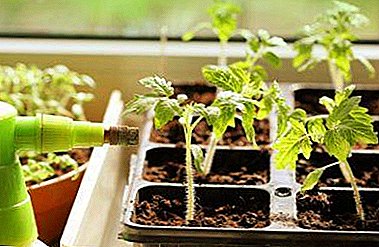 High-quality fertilizer through soilball.
High-quality fertilizer through soilball.- Increasing the rate of growth of green mass plants and its quality.
- More intense flowering and abundant fruiting.
- Low cost.
- Ease of use.
- Disinfectant properties.
- Environmental friendliness.
The use of ammonia as a fertilizer when grown in the garden does not cause the accumulation of nitrogenous compounds in the edible parts of tomatoes.
Most significant The negative qualities of the ammonia solution used in the role of tomato food are:
- Long procedure for the preparation of the working composition.
- The ability to overfeed the plants in case of violation of the dosage.
- Easy acidification of the soil, which can increase with each application of fertilizer.
The main nuance when working with ammonia as a fertilizer is a clear calculation of the concentration of the working composition and the frequency of its introduction.
Ammonia solution from the pharmacy has long established itself as an affordable and highly effective means for feeding plants.
Application at the stages of seedlings development
The use of ammonia is recommended at almost all stages of the vegetation of the plant., starting from the cultivation of seedlings, ending with the period of ripening fruits.
For seedlings
Strong viable seedlings - the first step towards obtaining an enviable harvest of tomatoes. It is difficult to underestimate the beneficial effect of ammonia solution in growing small tomatoes. Fertilizer seedlings tomato and pepper will allow seedlings to quickly add to the growth while less reach, make the stem flexible and stocky, add healthy leaves, while less stretching.
To feed the seedlings of tomatoes should be no earlier than 15 days after pickingwhen the first two pairs of true leaves unfold completely. To prepare a nutrient solution for watering seedlings, dilute one teaspoon of 10% ammonia per liter of water. The resulting composition is sprayed on the ground parts of plants with a spray gun. It is recommended to carry out the procedure in the morning or evening hours in order to avoid leaves getting sunburn.
We wrote here about the fact that we can fertilize tomato seedlings in the early stages of growth, and here we talked about how to feed it before and after picking.
For adult plants
 Fertilizer of adult tomato bushes with ammonia is carried out by introducing the working composition directly into the soil.
Fertilizer of adult tomato bushes with ammonia is carried out by introducing the working composition directly into the soil.
Take 10 ml of 10% ammonia solution per 10 liters of water. If the concentration of the drug is 25%, proportionally reduce the amount of its introduction. The prepared solution is thoroughly mixed and applied directly under the plant root at the rate of 1 liter of fertilizer per 1 tomato bush.
Before carrying out basal irrigation of plants with fertilizer from ammonia, be sure to shed the earth with plain water. Otherwise, the roots can get burned during the application of the top dressing.
Top-dressing with nitrogen-containing fertilizers is recommended to be made no more than three times during the whole vegetation period: 1 time per seedling stage, build-up of green mass by an adult bush and ripening of already established fruits. At the stage of planting buds and ovaries nitrogenous fertilizers are not required for tomatoes.
Fertilizer at the stage of ripening
Nitrogen contained in ammonium hydroxide has the ability to beneficially affect the rate of ripening and the final quality of tomatoes. Wherein fertilizing ammonia can be produced at all stages of aging tomato and cucumberwithout harming both the plant itself and the quality of the crop.
For a 10-liter bucket take 200 ml of apple cider vinegar, a tablespoon of 10% ammonia and 10 ml of soap solution or liquid soap. The resulting composition is stirred until complete homogeneity and spray them with fruits directly on the bushes with a spray gun. As a result, the speed of ripening tomato increases, and their final mass increases.
Pest control with mortar
To use ammonia as an insecticide for tomatoes, add 1-2 tablespoons of ammonium hydroxide and 100 ml of soapy water to 10 liters of water. The resulting composition is mixed and densely sprayed on the aerial parts of plants.
Ammonia is an effective means to prevent the occurrence of insects and fungi on tomato bushes, as well as an assistant in the fight against these troubles at an early stage of their development.
If the infection has a neglected nature, it is recommended to resort to the use of specialized drugs of more intense exposure.
Ammonia inexpensively and easily purchased at any pharmacy. The useful properties of this drug for tomatoes are difficult to overestimate. The fertilizer applied in the required dosage in time will help to grow strong and healthy bushes, literally covered with ripe tomatoes.


 High-quality fertilizer through soilball.
High-quality fertilizer through soilball.